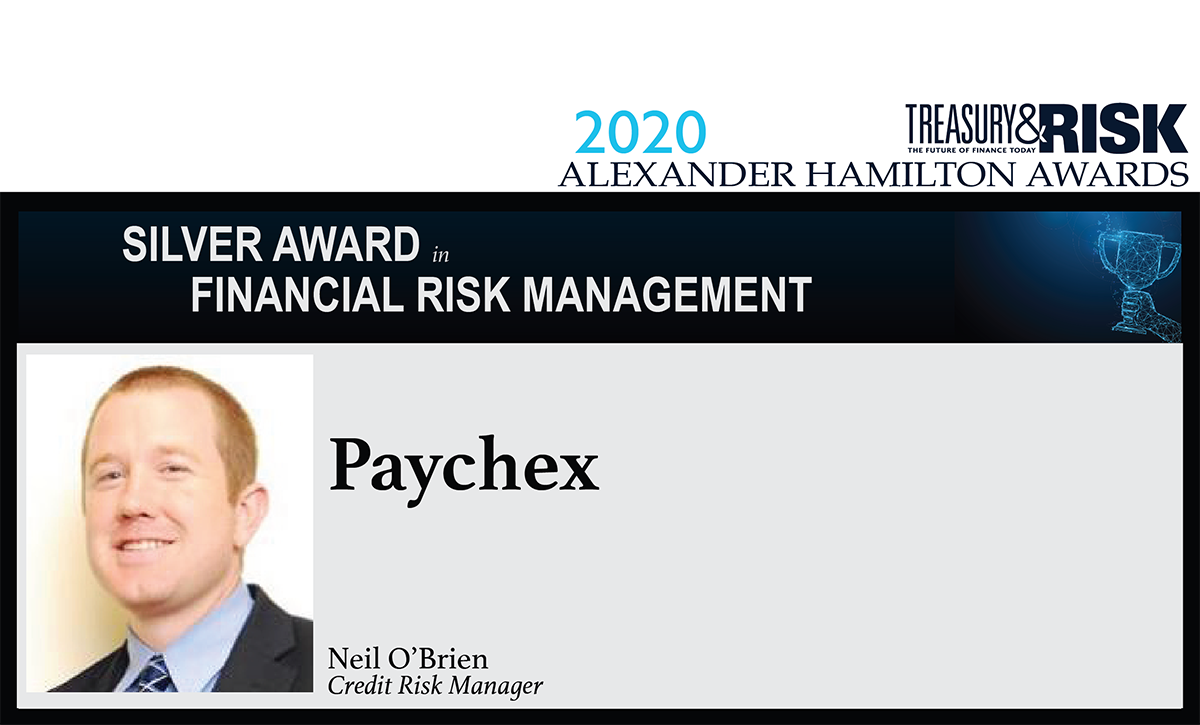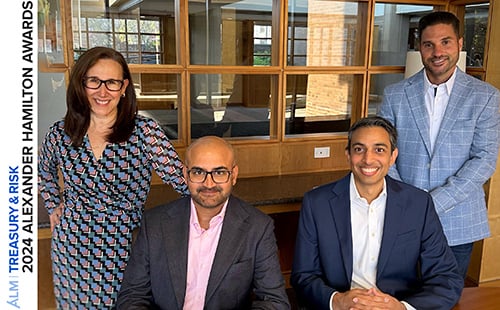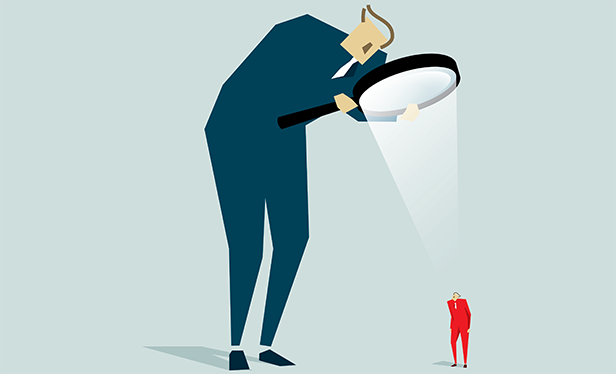
Paychex is an HR and payroll services company serving hundreds of thousands of businesses across the United States. In the company's streamlined, automated service model, each payroll run consists of two types of transactions that happen simultaneously: ACH payments to the client's employees and billing the client to cover those paychecks.
"So, if you're a client that is paying 10 employees this Friday, our debit will go into your business's operating account at the same time the direct-deposit credits are going out to your workers' checking accounts," explains Neil O'Brien, credit risk manager for Paychex. "That means there is always some uncertainty in whether our debit is going to be honored. Perhaps your business operating account does not have sufficient funds, or perhaps there's another reason the debit might be denied. Whatever the reason, if that happens, our credits have already gone out to your employees. That uncertainty creates a credit exposure for Paychex."
Recommended For You
In the past, Paychex managed this risk by performing a credit review during the client onboarding process that relied on commercial credit reports, public records, and other external data. Some lines of business incorporated automation into certain areas of credit scoring, but much of the work was manual. The outputs of this credit review were a customer credit limit and parameters for indicating whether a transaction required a closer look. Subsequently, transactions would be flagged if they fell outside the parameters that Paychex had established during the initial review.
The largely manual workloads were inefficient, and the external data was expensive. Together, these factors limited the frequency with which the Paychex credit risk team could re-review a customer's creditworthiness. As the business expanded, Paychex management became concerned about the effectiveness of its legacy credit review process.
"We had good success at keeping bad-debt levels low, but we were relying on fairly simplistic criteria for measuring credit risk," O'Brien says. "After the client onboarding, credit reviews were typically triggered only if a dollar amount exceeded our preset limits. And when credit managers evaluated an account, they were mostly looking at lagging indicators. Paychex was growing, both organically and through acquisition, and we knew this process could present challenges as we grew."
The credit risk management group partnered with Paychex's data science group to refine credit risk management processes. Their goals were to increase automation and make credit reviews as predictive as possible. "We presented the business case to the data science team, along with several hundred variables that we thought might affect default risk," O'Brien explains. "We hypothesized about which were the most statistically significant. Then the data science team tested our hypotheses to determine how predictive each of the variables truly is."
Meanwhile, O'Brien's team researched credit bureaus' best practices. Based on that research and the statistical analysis of risk drivers, the teams jointly built a new credit risk model for Paychex. The model incorporates more than 300 factors, which are weighted based on their demonstrated ability to predict creditworthiness.
 "The most impactful variables within the model are internal performance indicators," O'Brien says. "Those are factors like the client's payroll size, return experience, changes in behavior. Are those metrics growing? Shrinking? Staying the same size? We also pull in external data and output a numerical score."
"The most impactful variables within the model are internal performance indicators," O'Brien says. "Those are factors like the client's payroll size, return experience, changes in behavior. Are those metrics growing? Shrinking? Staying the same size? We also pull in external data and output a numerical score."
Because the process is automated, Paychex is able to update every client's credit score once a week. "If a low-risk client remains low-risk, or even if a high-risk client is stable at the same high level of risk, we aren't likely to need any adjustments to our credit policy with regard to that company," O'Brien says. "But when a client's risk level is changing, we may need to react, either tightening their credit or opening up their limits."
A significant change to a customer's credit risk score—or a score that falls outside Paychex's risk appetite—triggers an alert that leads to a secondary, manual credit review. The project team also streamlined these secondary reviews, by building an artificial intelligence (AI)–based "explainer" tool. "Just like with a commercial credit report, the explainer provides reason codes showing which variables had the most impact on driving a customer's credit score up or down," O'Brien says.
The information coming out of the new model and its explainer supports better management decisions around customer credit risk. O'Brien says the robust and predictive credit-scoring process also enables Paychex to extend more credit to certain clients than might have been possible previously.
"Today, with our new credit model, we are pulling in many more variables than we used to, so our analyses of customer credit are more targeted," he says. "Credit reviews are also happening much, much more often. As a result, we have much higher confidence in the credit quality of our customer base."
O'Brien sees the 2020 economy as an excellent demonstration of the benefits of utilizing such a rigorous, data-driven approach. "When the whole world was struggling because of the pandemic, we needed to understand which transactions were highest risk and most deserving of a credit manager's attention," he says. "With our legacy process, we would have just cast a wide net and hoped we caught the most stressed companies for credit re-review. Instead, with our new credit risk model, we were able to specifically target the customers that were most at risk, which enabled us to limit our exposure accordingly."
At a time when customer credit exposures and fraud attempts are both at an all-time high, Paychex has actually reduced bad debt. "We have a low risk tolerance as a company," O'Brien says, "and despite the economy, we have made an already small number—somewhere around one-ten-thousandth of a percentage point—even smaller. In my opinion, this has been a staggering result, and our new credit risk model has been a big contributor."
Despite the clear benefits of this initiative, the credit risk team is not resting on its laurels. "We continue to tweak the model," O'Brien says. "Every month, we step back to analyze the previous month's results and determine how accurately the model predicted NSF [non-sufficient funds] returns. We segment clients into different scoring buckets and look at our actual return experience with each group. When that analysis reveals an issue, we drill down to see what commonalities between clients might have helped us better predict returns. Then we update the model, if needed, so that it continues to grow stronger over time."
And that is a lesson O'Brien thinks every credit risk group could learn from this project. "It's a bit of a luxury that we have a pretty large risk group and a separate data science group," he says. "Still, it's common sense that credit risk evaluations should be constantly evolving. Even a company with a small risk team should regularly revisit how well its credit risk model is working, and continuously fine-tune it. I have no doubt they will find that is worth the effort."
See also:
And don't miss our March 17 webcast recognizing the 2021 Alexander Hamilton Award winners in Technology Excellence. In this first event of our 2021 award season, learn from the three winning projects, and receive AFP recertification credits. Register today!
© Touchpoint Markets, All Rights Reserved. Request academic re-use from www.copyright.com. All other uses, submit a request to [email protected]. For more inforrmation visit Asset & Logo Licensing.



